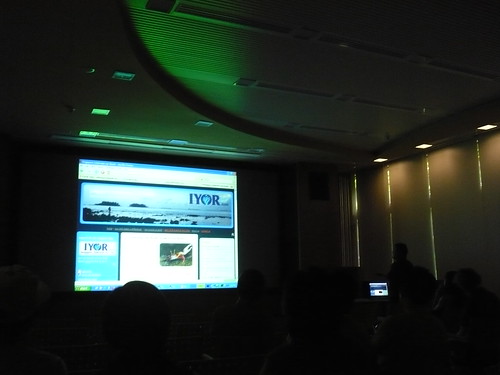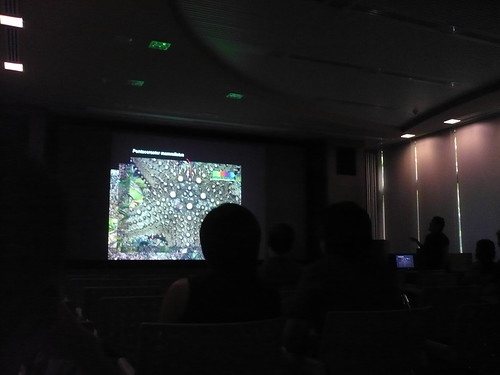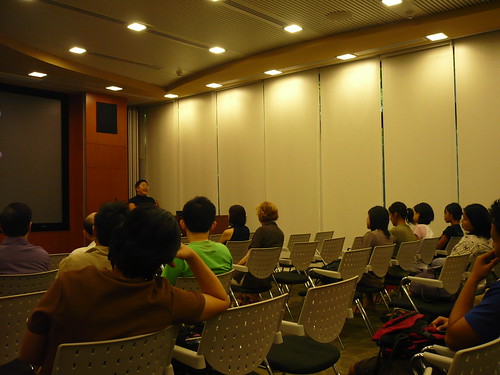
Update: Check out Ria's post on her talk at the wildfilms blog.
Today, I went down to the Singapore Botanic Gardens, as Ria was giving a talk on the Secret Shores of Singapore.
On my way to the talk venue, as I was walking down Upper Palm Valley Road, there was a loud commotion in the vegetation just next to the footpath. There was a loud rustling of leaves, and a cicada suddenly fell to the ground, followed by a small shower of dead leaves and bits of twigs. Closer inspection of the shrubs at eye level revealed a plantain squirrel (Callosciurus notatus), which seemed to be frantically searching for something. Perhaps it was looking for the cicada, which had now vanished.
Right in front of the Botany Centre, there was another rustling in the shrubs beside me; another plantain squirrel. This is Singapore's most common squirrel species, and can be commonly found even in urban parks and gardens.
Almost simultaneously, I registered the presence of a common sun skink (Eutropis multifasciatus) on the ground next to the footpath. 2 squirrels and a lizard within 15 minutes of reaching the Botanic Gardens, and I wasn't even actively looking for them.

Ria gave an engaging talk, similar to those she has given before, but with a new focus on Cyrene Reef. How timely that today's edition of the Straits Times has an article featuring the discovery of the sea star Pentaceraster mammillatus, a new record for Singapore.

Some of the questions asked by members of the audience at the end of the talk were quite interesting. The one that really left an impression on me was about the potential threat posed by various marine organisms to human life. After all, many marine creatures are highly venomous, and an encounter with any one of them under the wrong circumstances can prove fatal to anyone exploring the shores. These include:

Jellyfish, which can really spoil a diving trip, but at least we don't seem to get the insanely venomous box jellyfish (Cubozoa) in our waters.

Estuary stonefish (Synanceia horrida), which have been found from time to time.

Sea snakes. The yellow-lipped sea krait (Laticauda colubrina) is not uncommonly seen around reefs.

Stingrays such as the blue-spotted ribbontail ray (Taeniura lymma) and mangrove whipray (Himantura walga) can often be spotted in shallow waters at low tide.

Cone snails (Conus spp.) were mentioned, but live specimens seem to be very rare in our waters these days.
Among those of us who regularly explore our shores, there have been stonefish and stingray incidents in recent years. But hey, so far nobody has died, and we still have all our fingers and toes.
I'm sure all the people who attended had an enjoyable time, are now more aware about the richness of our shores, and the challenges faced by our marine biodiversity.
A group of girls from Raffles Junior College approached Ria after the talk. It turns out that they are interested in making a short film about the marine life that can be found along the natural shores of Sentosa. Great to hear that more youths are expressing an interest in our local biodiversity. I'm now waiting for them to email me so I can pass them the tide tables for this month.
Still to come: Exploring the rainforest, and life around the Symphony Lake.
This is part 1 of a 3-part series on a trip to the Singapore Botanic Gardens on 3rd May, 2008.
Part 1: Secret Shores of Singapore (this post)
Part 2: coming soon
Part 3: coming soon